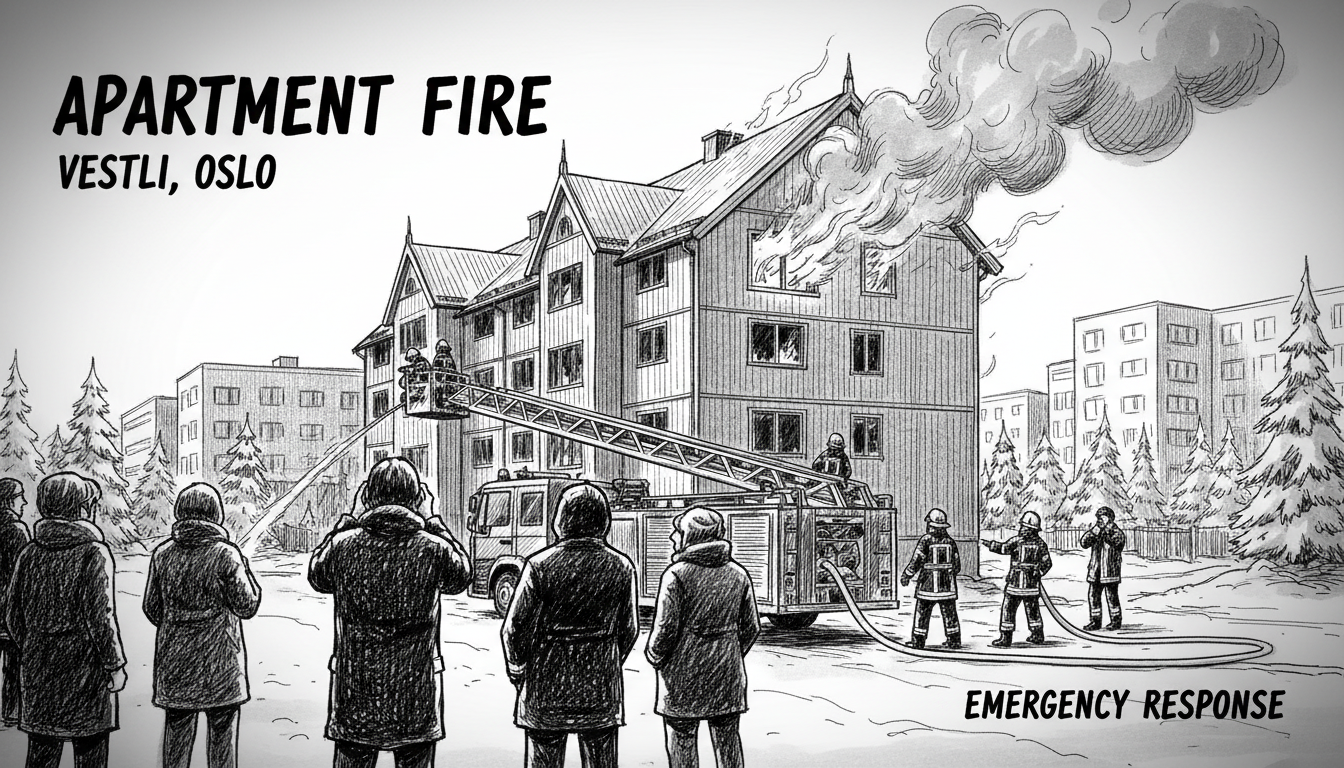Emergency services rushed to an apartment fire at Vestli in Oslo late Friday. Police confirmed all residents evacuated the burning unit safely. Firefighters entered the building with smoke divers to contain the blaze.
Vestli represents a typical Oslo suburban neighborhood with mixed housing types. The area contains numerous apartment blocks built during the 1970s and 1980s expansion of the city's northern districts. These residential zones face particular fire safety challenges due to their construction era and population density.
Norwegian emergency response protocols demonstrated their effectiveness in this incident. The coordinated effort between police and fire services ensured resident safety remained the priority. Oslo's emergency systems typically maintain high readiness levels for residential fires, which occur with concerning frequency in the capital's older housing stock.
Apartment fires in Oslo often trace back to electrical faults or cooking accidents. The city's aging building infrastructure presents ongoing safety concerns. Many structures predate current fire safety regulations, creating potential hazards for residents.
This incident highlights the importance of functional smoke alarms and evacuation plans. Norwegian law mandates regular fire safety inspections in multi-unit buildings. Property owners bear responsibility for maintaining adequate escape routes and fire prevention systems.
The Vestli case follows a pattern of similar incidents across Oslo's suburbs. These events typically prompt temporary displacement of residents and property damage. Insurance claims for fire damage in Norwegian apartments often involve complex assessments of liability and compensation.
International residents should note Norway's strict fire safety standards. The country employs rigorous building codes, though older structures may not meet current requirements. Expat renters should verify their building's fire safety certification and understand local emergency procedures.
What happens next for affected residents? Temporary housing arrangements typically follow such incidents while damage assessment occurs. The building will undergo safety inspections before residents can return. Insurance companies will evaluate claims for damaged property and alternative accommodation costs.
Norwegian authorities maintain detailed records of residential fires. These statistics help shape future safety regulations and emergency response strategies. The data reveals seasonal patterns and common causes that inform prevention campaigns.
This Vestli incident serves as another reminder of fire risks in urban housing. It underscores the value of functional emergency systems and prepared residents. The successful evacuation demonstrates proper protocols working as intended.

